Chenopodiastrum murale, Nettleleaf Goosefoot
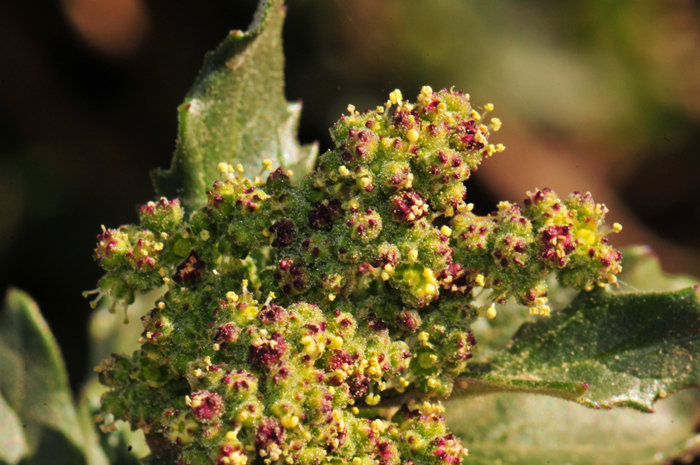
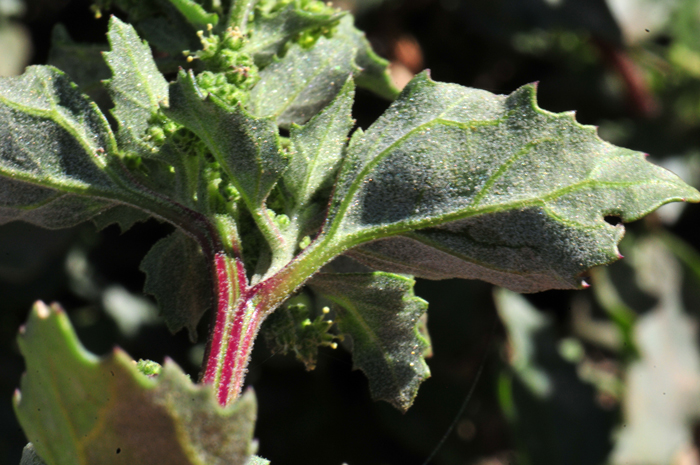
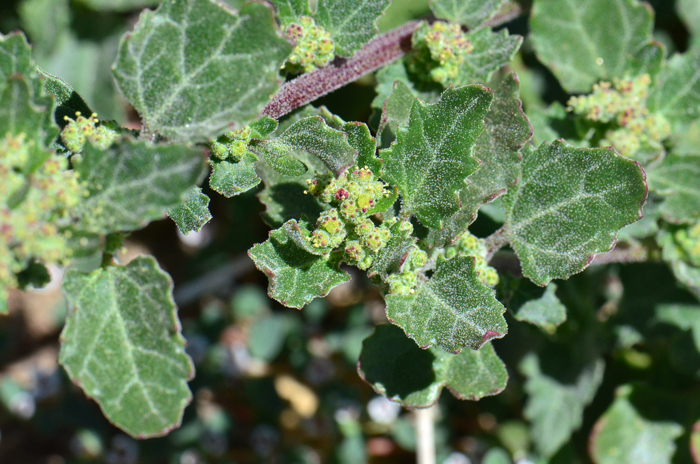
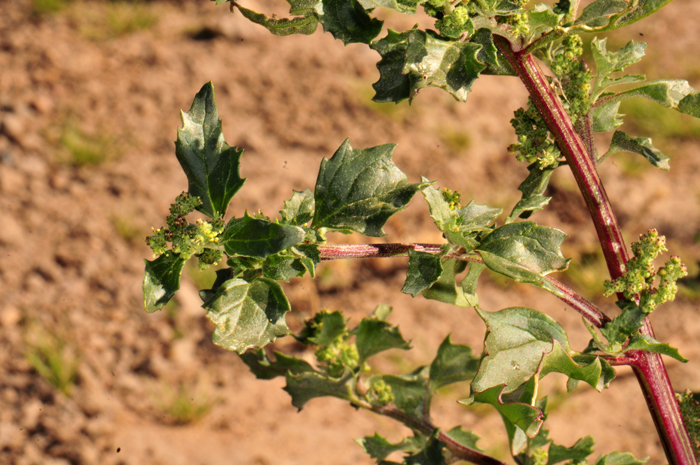
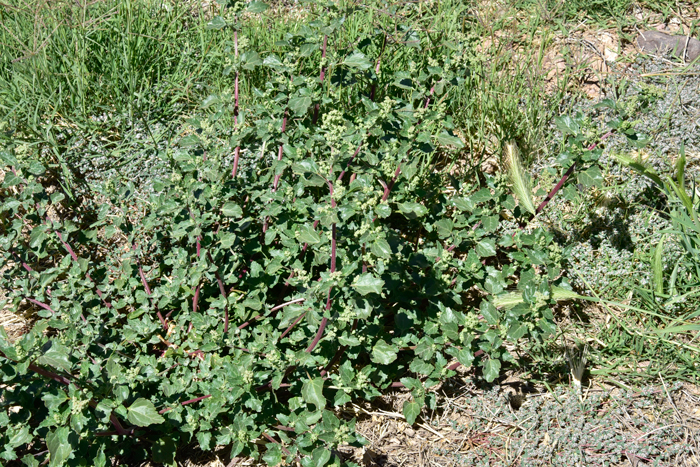
Scientific Name: Chenopodiastrum murale
Common Name: Nettleleaf Goosefoot
Also Called: Aheahea, Australian-Spinach, Mock Goosefoot, Nettle-Leaf Goosefoot, Pigweed, Sowbane, Wall Goosefoot, Spanish (Cenizo; Chenopodio des Murs, Chual, Hediondilla, Hierba del Perro, Quelite Cenizo)
Family: Chenopodiaceae, Goosefoot Family (now as sub-family Chenopodioideae in the Amaranthaceae Family).
Synonyms: (Chenopodium lucidum, Chenopodium murale, Chenopodium triangulare, Chenopodium urbicum)
Status: Introduced from Europe.
Duration: Annual
Size: 1.5 to 2(3) feet (1-6(-10) dm)
Growth Form: Forb/herb plants upright or erect, branched, plants mostly glabrous or young plants sparsely farinose, proximal branches decumbent.
Leaves: Green; with stem (petiole), leaf shape variable, triangular, ovate or rhombic-ovate; margins dentate.
Flower Color: Green or greenish-yellow; the flowers are mostly in small axillary and terminal glomerules which are found in terminal panicles; fruit is a tiny greenish achene, seeds are blackish.
Flowering Season: March to October or November or throughout the year.
Elevation: 150 to 8,000 feet (45 to 2,438 m) or higher.
Habitat Preferences: Roadsides, fields, pastures, gardens, landscape areas, adjacent to rail road tracks, waste areas, rocky hillsides, both urban and agricultural places; multiple plant communities across its wide geographic range, woodlands, prairies.
Recorded Range: Nettleleaf Goosefoot is found in various locations and situations throughout its large geographical in North America, USA and well into Canada, southward to Mexico and South America. It is found almost world-wide in temperate areas to tropical and sub-tropical regions.
North America & US County Distribution Map for Chenopodiastrum murale.
U.S. Weed Information: In North America Chenopodiastrum murale can be weedy or invasive according to the following authoritative sources: Weeds of the West. Western Society of Weed Science in cooperation with Cooperative Extension Services, University of Wyoming. Laramie, Wyoming.
Plants included here may become weedy or invasive.
Invasive/Noxious Weed Information: No information available.
Threatened/Endangered Information: No information available.
Wetland Indicator: In North America Chenopodiastrum murale has the following wetland designations:
Arid West, FACU; Atlantic and Gulf Coastal Plain, FACU; Eastern Mountains and Piedmont, FACU; Great Plains, FACU; Midwest, FACU; Northcentral & Northeast, FACU and the Western Mountains, Valleys, and Coast, FACU.
FACU = Facultative Upland, usually occur in non-wetlands, but may occur in wetlands.
In the Southwestern United States: Arizona has 17 species of Chenopodium, California has 27 species, Nevada has 19 species, New Mexico has 24 species, Texas has 18 species, Utah has 21 species. All data approximate and subject to revision.
Comments:Chenopodiastrum murale, Nettleleaf Goosefoot is one of the most common summer plants and one of the most common species in the genus in the world. It is a common summer and winter weed throughout a large part of its range in sub-temperate, sub-tropical and tropical regions.In Southwest Desert Flora also see: Lambsquarters, Chenopodium album.
The genus Chenopodium was published by Carl Linnaeus in 1753.
See complete listing of ethno-botanical uses at Native American Ethnobotany, University of Michigan, Dearborn.

